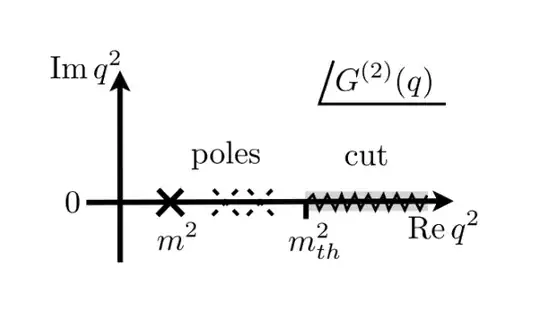Yes, there is and you can see it directly in the Källen-Lehmann spectral representation. I won't give you the derivation because it's quite lengthy but when you take this representation for the propagator you can divide the contribution from the one particle states from the contribution from the many particle state in the following manner (for a scalar field, but the results stays the same for spinors and vectors)
$$G(q^2) = \frac{Zi}{q^2-m^2+i\epsilon}+\int_{M_{\text{th}}^2}^\infty\mathrm{d}\mu^2\frac{i\rho(\mu^2)}{q^2-\mu^2+i\epsilon}$$
when you look at the analytic structure of the propagator as a function of $q^2\in\mathbb{C}$ you clearly see a pole given by the physical mass and a cut related to the multiparticle states. In the image there're also highlighted the possible poles due to bound states.

This is quite an interesting result since gives you a correspondence between the physical mass and the unique pole in the propagator. All the multiparticle states do not give singular contributions to the propagator. And most importantly, this result does not rely on perturbation theory. It is go general that it was used bu Weinberg, Goldstone and Salam to give a non-perturbative proof to Goldstone theorem.
